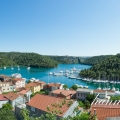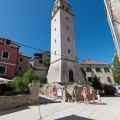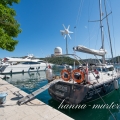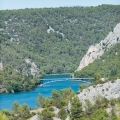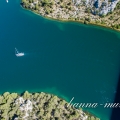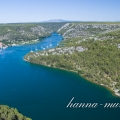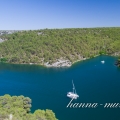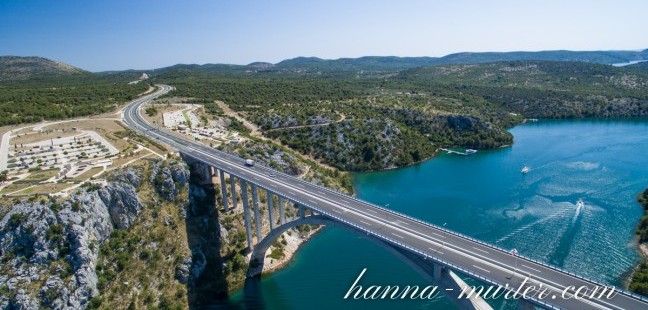
Skradin
When speaking about the 6000 year long existence of the Skradin area, historians endowed with wisdom search for the reasons of that continuity in its location and geo-strategic position.
History always looks for great and sensible reasons. However, the truth is often much simpler since people and everyday life are smarter than history.
Skradin is simply magical in its each and every detail.
In the loud morning silence that gets under your skin and the stentorian traditional folk klapa singing that touches your heart. In the peace and quiet of the Visovac monastery and the burst of water drops of the Skradinski Buk waterfall.
In each moment of enjoyment of food which has skilfully managed to escape both fridges and freezers which would rob it of its natural aromas and has arrived thoroughly fresh at your table.
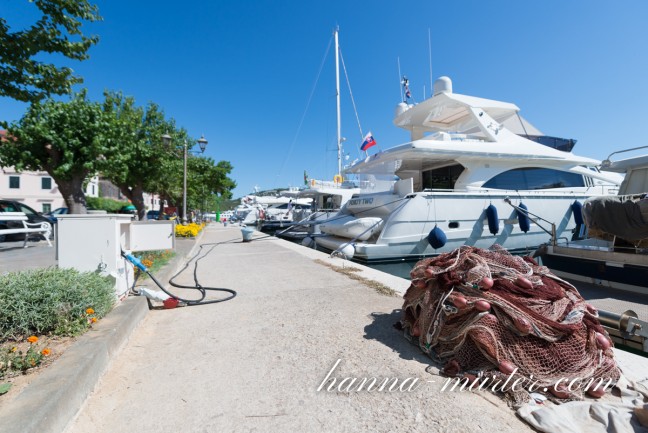
Such is Skradin, small, picturesque and filled with flavour, found at a point where the river passionately embraces the sea.
Such is Skradin, at the border of reality and fantasy.
Such is Skradin, perfect, both in past and present.
The secret of Skradin
Yet even a million inhabitants is not that which makes a city but the sense of connection among its people, their respect for public good and social norms.
A city is a state of mind and a way of life, there lays the secret. The secret of ancient Skradin is hidden in the harmony of its good strategic position, in its fertile fields, in the depths of its rivers and sea and in its unusually beautiful scenery.
In Skradin this harmony was also transferred to the social community through the Medieval Statute of the town written in Latin at the beginning of the 14th century, under the rule of the famous Pavao Šubić when Skradin was the principal town of Croatia and Bosnia!
The original manuscript of the Statute is kept in Venice in St. Mark’s Library. Long ago in the 4th century Skradin was the centre of the early Christian diocese. Even earlier than that, it was the capital of the Roman Province of Liburnia, and before that, the capital of Liburnia.
The surroundings of Skradin have been inhabited since the Neolithic period – the oldest settlement dates from the year 3500 B.C. The first data about the town of Skradin dates from the year 33 B.C.
The first data about the town of Skradin dates from the year 33 B.C.
Skradin had the first hydroelectric power plant in Europe, opened in 1895, at the same time as Tesla’s famous power plant at Niagara Falls!
The most beautiful view of Skradin extends from the belvedere and the bridge situated on auto route A1, en route towards Split. Due to its breathtaking view, this belvedere was nominated for the Golden Flower of Europe award for the most beautiful belvedere on European auto routes.
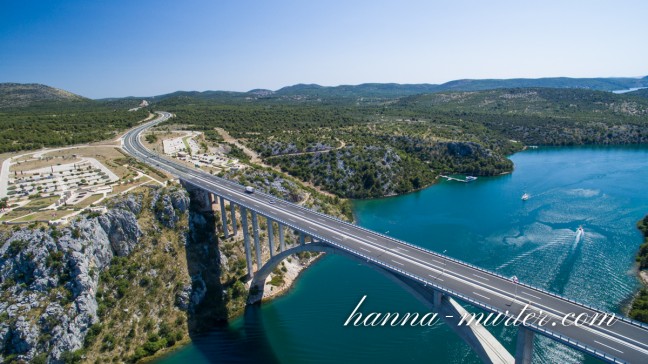
Places to visit
Belvedere and early medieval fortress of ban Pavao Šubić of Bribir from the 13th or 14th century
Baroque Catholic Church of the Parturition of the Blessed Virgin Mary from the 18th century containing a very valuable pipe organ
Orthodox Church of St. Spiridon from the 19th century, a donation from Emperor Francis Joseph
The Skradin Town Museum with a rich collection of exhibit items from the pre-historical age, Liburnian period and period of Antiquity to the late Middle Ages
Parish House containing a rich collection of works of art and a library
Town core
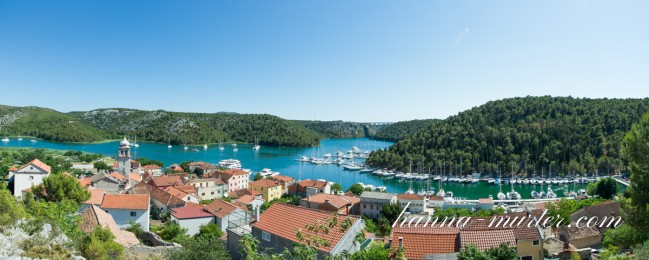
Skradin is a romantic Mediterranean town with narrow paved streets, passages, vaults and stairs.
The entire town core represents a protected cultural monument. It contains houses dating from the 18th and 19th century which are stuccoed inthe manner typical for Venice and areas under her influence.
On the streets of Skradin you will find the pleasant atmosphere of a small Dalmatian town, especially during the Skradin festival of klapa singing (a capella singing typical for the Croatian Adriatic) or during the celebration of the Nativity of the Virgin Mary.
SKRADIN GALLERY

